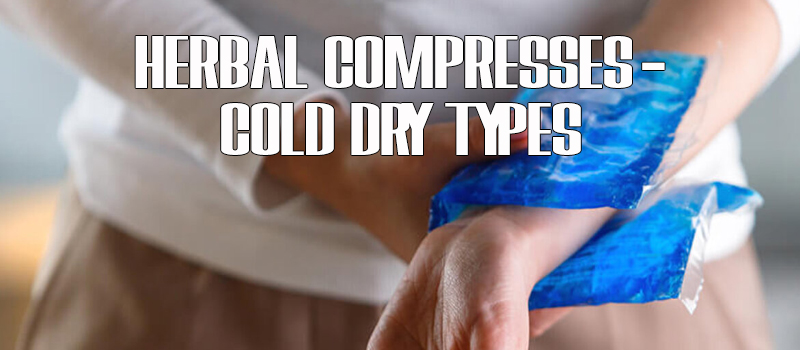How To Make A Compress
Understanding the Benefits of Cold Therapy for Acute Injuries
Cold therapy emerges as a pivotal tool in the arsenal of injury management, especially for acute injuries stemming from sudden trauma impacting bones, tissues, ligaments, or muscles. These injuries manifest with telltale signs: pain, tenderness, redness, warmth, and swelling in the afflicted area.
The Power of Immediate Intervention
Within the critical window of 48 hours post-injury, applying cold therapy offers immediate relief, though its effects are transient. Typically, it’s combined synergistically with other therapeutic modalities like compression, elevation, bracing, and support.
Mechanism of Cold Therapy: How It Works
The application of an ice pack on the injured site induces a profound response. The cold seeps through the layers of skin, causing constriction in the underlying blood vessels. Consequently, blood flow to the area diminishes, leading to a reduction in swelling and a temporary numbing of nerves. This numbing effect alleviates pain perception, offering respite from discomfort.
Post-Exercise Recovery: Cold Therapy’s Role
Chronic injuries often intensify post-exercise, amplifying discomfort. Employing cold therapy post-workout acts as a deterrent against swelling and pain escalation. While its effects primarily target superficial tissues, mitigating deeper joint and muscle concerns may necessitate additional interventions.
Dispelling Misconceptions: Internal Temperature Regulation
Despite the skin’s sensation of extreme cold during therapy, the body’s internal temperature remains steadfast. This resilience stems from the intricate thermoregulatory mechanisms inherent to the human body.
Conclusion
Incorporating cold therapy into injury management protocols yields multifaceted benefits. Its ability to swiftly mitigate pain, reduce swelling, and aid in post-exercise recovery underscores its indispensability in holistic rehabilitation strategies. As we unravel the intricacies of cold therapy, its integration into mainstream therapeutic approaches becomes increasingly indispensable.
Directions
Cold compression, like any other therapy, is effective only when done properly and in moderation.
- You can either place the cold compress on the affected site or massage the area with gentle pressure.
- Make sure to use a thin towel between the ice pack and the skin. Direct application of extreme cold for prolonged periods can cause tissue damage and frostbite.
- Leaving an ice pack on your skin for too long will only exacerbate your injury.
- While there is no set schedule for long-term ice application, it is recommended to ice your injury soon after it occurs for no more than 20 minutes at a stretch.
- Give your skin at least 20 minutes to lose the numbness and return to its normal state before reapplying the cold compress.
- Continue the cycle until your discomfort starts to ease away.
Different types of pain call for different types of cold treatment:
- You can use cold wraps over the eyes, forehead, and temples to reduce the intensity of migraine headaches.
- You can fill a sealable bag with ice cubes to make an ice pack, which is commonly used as a quick treatment for sports injuries.
- You can make your own frozen food compress at home by freezing a bag of chopped vegetables or peas and then using it on the injured area.
Instructions
Here are a few simple ways to make your own cold compress using things you can easily find in your kitchen.
- Dish Soap – Liquid dish soap is a common household ingredient that can be used for making a cold compress. When you freeze this fluid, it acquires a gel-like consistency and remains undissolved for a much longer time than other liquids.
- Take your regular liquid dish soap and pour it into a Ziploc pouch or vacuum seal freezer bag.
- Place the bag in the freezer until the soap freezes to a semi-liquid state.
- Spread a thin hand towel over the swollen area and place the dish soap cold compress over it.
- You can also wrap the compress in a towel and gently massage the affected area with it.
- Rock Salt – .You can freeze a solution of rock salt and water to make a highly malleable cold compress, which can be twisted and wrapped around your wrist or ankle. The saline solution tends to remain frozen for a longer period than plain water.
- Take some water in a jug and add rock salt to it.
- Stir the solution for a while, and then pour it in a sealable bag.
- Put the bag in the freezer until the liquid turns into a soft jelly-like material.
- Place a towel on the swollen area and then put the frozen salt water bag on top of it, or wrap the bag in a towel and then apply it to the injured site.
- Rice – A rice bag can be used for both heat and cold therapy. Frozen rice granules can hold the cold for relatively long periods, making them an effective material for a cold compress.
- Take an old sock and fill it with raw rice.
- Tightly knot the mouth of the sock.
- Place the sealed rice bag in the freezer for 2–3 hours or until it becomes chilled.
- Apply the cold rice bag to the swollen or injured area.
- A chilled spoon serves as the perfect cold compress for the relief of the swelling and pain associated with a black eye. Apply the cold spoon to the bruised areas around the eye.
Although heat and cold therapies serve individual purposes in relieving pain and inflammation, there are certain conditions or injuries that are best treated with a combination of both.
Combination therapy essentially involves the alternate application of cold and warm compresses to the site of injury. It is often recommended for back pain but only after a proper medical exam.
Back injuries can be quite serious and can give rise to long-term complications if not treated properly. Therefore, you must get the injury checked by an orthopedic first to determine if combination therapy is the right way to go.






